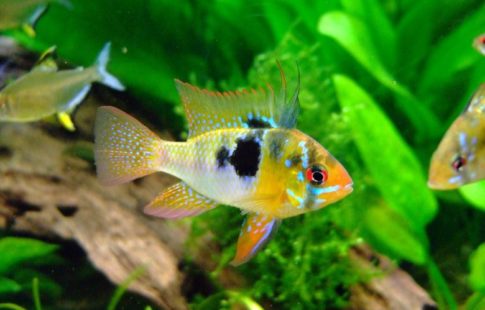Can Artificial Intelligence in Environmental Science Save the Planet?
We are reader-supported. When you buy through links on our site, we may earn affiliate commission.
Most people worry about the impact of human activities on the earth. Individuals can only reduce their carbon footprint so much, making barely a ripple in the problem. However, tapping into the growing power of artificial intelligence (AI) in environmental science may be the answer to solving complex algorithms and driving the world toward a greener future.
Since the release of ChatGPT in November 2022, the AI models have been changing the way people create, conduct business and solve problems. Enhancing the functionality of chatbots was only the start of a new phase of the Digital Age. Those who want to monitor and figure out better ways to protect the environment can input massive amounts of data and generate reports on how different actions change the climate.
How Artificial Intelligence in Environmental Science Is Making a Difference
People passionate about conservation and the environment will appreciate the hard facts AI brings to the discussion. Everyone has an opinion on how much damage humans are doing to Mother Nature. It’s easy to let emotions take control of a conversation about being more eco-conscious. However, when you take the feelings out of the discussion and look at facts, it becomes clear everyone needs to do their part.
1. Climate Change Models
Scientists disagree on how fast climate change is happening and what the impact might be in the future. Some models show dire consequences and state the world is already past the tipping point. Other predictions show the planet can still be saved with quick action.
AI technology takes past data and current analytics and meshes various scenarios to predict how human action or inaction will change the future of the earth. By looking at different environment change policies, governments can ensure their decisions work to fix the problems at hand without making other situations worse.
By using sensors and satellite imagery, artificial intelligence and environmental science can predict major weather events, track icebergs and whether they are melting at a fast rate and even see the rise in ocean temperatures. While the impact from human actions may not be immediately apparent, inputting the data into machines can offer insights over time.
2. Wildlife Conservation
Following the path of an endangered species can be a zig-zag of misinformation. In addition to zoos getting in on conservation efforts, people passionate about wildlife conservation often find a particular species can make a comeback with a few minor changes.
There are several examples of wildlife conservation being effective. Use of the pesticide DDT killed most of the bald eagle population, placing the national symbol on the endangered species list in 1962. Activists were able to get the chemical banned by 1972. The protections afforded nearly extinct animals, species breeding, reintroduction efforts and stopping DDT use resulted in the bird being removed from the endangered list in 2007.
Another conservation success story comes from the Karener blue butterfly. Once nearly nonexistent, scientists realized the lack of the wild blue lupine plant was the reason these beautiful insects weren’t thriving. They made some changes in prescribed burning and restoring the plant to states such as Indiana, Ohio, Michigan, Wisconsin, New York and New Hampshire. Scientists also worked with private landowners to reintroduce the plants and butterflies to nature. Today, the Karner blues have been restored and are no longer endangered.
Examples of species thriving after scientists thought they’d soon become extinct abound. Now, imagine adding machine learning into the mix to track population growth in a species. AI can also predict potential issues from urban sprawl or non-native species being introduced to an area.
3. Improved Renewable Energy
Many developed countries are dependent upon fossil fuels to run everything from massive computer servers to electrical plants. Finding a solution to the contribution of carbon is challenging. Any efforts must also factor in the costs to humans. People might wholeheartedly wish to use solar or wind power only to find the cost of installation is beyond their current means.
AI can help with renewable energy efforts in numerous ways. First, scientists can let the computer do complex calculations to see if the finished product is one people can afford to buy. What is the cost savings over time of installing solar panels on your roof, for example?
Companies producing sustainable energy products can install sensors that send data to the cloud. AI then takes the data and makes adjustments to ensure the systems function properly.
Since many local utility companies are planting solar panel fields, factoring in supply and demand is a crucial part of changing how we consume energy. AI can look at patterns and predict when renewable energy is needed and what is available. Real-time weather conditions combined with historical usage paint the full picture and allow machines to predict current needs.
On the consumer end of things, AI can adjust thermostat settings and make automatic adjustments when people leave the building and move the lever up or down to save on costs and usage.
4. Air and Water Quality
AI sensors can monitor water quality and predict air pollution problems that trigger allergies. Computers can pick up on pollutants introduced into the environment by industry or human error. Analytics can make predictions about potential future pollution issues based on miniscule changes detected by the sensors.
If an oil or chemical spill occurs, the sensors can alert officials and start cleanup immediately before the problem spreads into waterways and harms more animals.
The United Nations is heading up a project to serve communities in Africa that need better access to waste management systems. Since waste produces around 16% of greenhouse gasses due to methane emissions, analyzing waste recycling can eliminate some of the problem.
Water and waste companies all across the world are tapping into the power of the cloud, utilizing sensors and letting AI software track and predict outcomes. The future of recycled waste and water is here and the environment will be better for it. Since water is a limited resource, it’s crucial people pay heed to scientists’ warnings.
Share on
Like what you read? Join other Environment.co readers!
Get the latest updates on our planet by subscribing to the Environment.co newsletter!
About the author

Jane Marsh
Starting from an early age, Jane Marsh loved all animals and became a budding environmentalist. Now, Jane works as the Editor-in-Chief of Environment.co where she covers topics related to climate policy, renewable energy, the food industry, and more.





